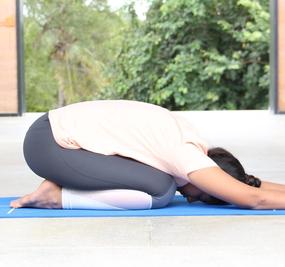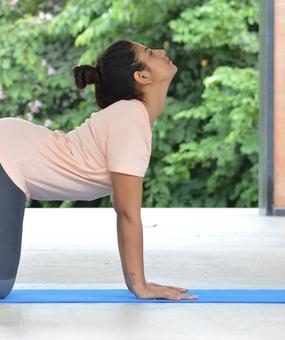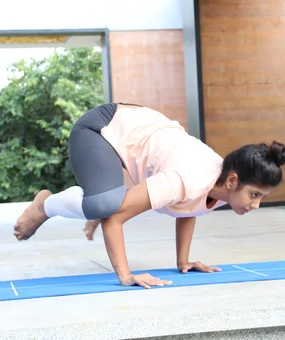Eka – One, Pada – foot, Raja – King, Kapot – Pigeon, Asana – pose
How to pronounce: Ache-aa-Pahd-uh-Rah-jah-Capote-aas-un-uh
Eka Pada Raja Kapotasana is a yoga posture suitable for intermediate level yoga practitioners. It is known to improve the flexibility of the hip muscles and aids in relieving sciatica.
Before you sit in this posture, do some simple warm-up asanas that will make the stretch easy and comfortable for the body.
Preparatory poses
- Seated Forward Bend (Paschimottanasana)
- Butterfly Pose (Badhakonasana)
- Parsvottanasana (Intense Side Stretch Pose)
- Gomukhasana (Cow Face Pose)
How to do Eka Pada Raja Kapotasana
- Begin by getting into the Cat Stretch (Marjariasana).
- Breathe out and bring your right knee forward to touch the right wrist.
- Bend the knee, and bring your ankle near the groin region. Now, slide the right foot towards the left hand, till the toes touch the left wrist.
- Slide the left leg back so that it touches the floor. Keeping the knee straight, ensure that the front of the foot is touching the ground, while the sole faces the ceiling.
- Lower your right buttock to the floor and press your tailbone forward to lengthen your lower back.
- You may strengthen the lower back further by pushing your fingertips firmly to the floor.
- Take a few deep breaths in this position.
- Taking support of your hands, slide your left knee forward while exhaling and get back into the Cat Stretch.
- Stay in the Cat Stretch pose and take a couple of deep breaths and repeat the process with the other leg
One-legged Pigeon Pose for beginners
If you are a beginner, it would help you to fold and place a blanket or place a yoga block below your groin region to support the body while doing the Eka Pada Raja Kapotasana. Over time and with practice, you will feel comfortable with the pose and will be able to maintain it naturally without these supports.
Benefits of Eka Pada Raja Kapotasana
Eka Pada Raja Kapotasana has several benefits:
- stretches the entire lower part of the body
- stimulates the abdominal organs
- strengthens the back
- improves posture
- helps relieve the body of sciatica
- helps open up the hips, making the hip region more flexible
- relieves the body of stress and anxiety
- opens up the chest region making you feel energetic and confident
Contraindications
Some people should avoid doing this pose in these conditions:
- Those with ankle or knee injury
- Pregnant women
- Those with a weak digestive system
- Those with pelvic or groin injuries
Also, perform this pose only under the supervision of an experienced teacher.
Follow-up poses
You may follow up this pose with these asanas:
- Sitting Half Spinal Twist (Ardha Matsyendrasana)
- Downward Dog Pose (Adho Mukha Svanasana)
- Monkey Pose (Hanumanasana)















